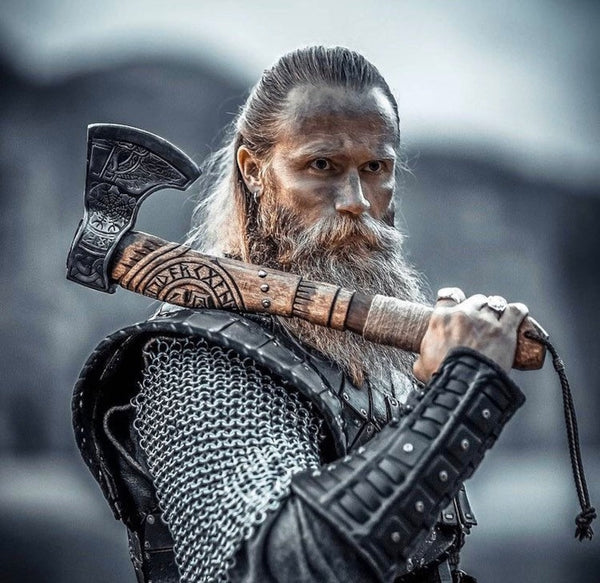In this instructional guide, we will break down the key components that make up this iconic weapon and explore its features in detail. Understanding the anatomy of a vikingská sekera is essential for appreciating its historical significance and mastering its effective use in combat.
- Blade: The blade is the heart of the Viking battle axe, responsible for its cutting power and lethality. Pay attention to the following aspects:
-
- Shape: The blade is single-edged, with a sharp cutting edge on one side and a flat or slightly curved backside.
- Material: High-quality iron or steel is used to forge the blade, ensuring durability and strength.
- Length: The blade’s length typically ranges from 15 to 25 centimeters (6 to 10 inches), striking a balance between power and agility.
- Haft: The haft, or handle, is the grip that allows the wielder to control the axe. Follow these guidelines for a well-crafted haft:
-
- Material: Choose sturdy wood like ash or oak to create a reliable and robust handle.
- Length: The haft’s length should be approximately 75 to 100 centimeters (30 to 40 inches) for comfortable wielding and proper balance.
- Carving: Carve the haft with a contoured grip to ensure a firm and ergonomic hold during combat.

- Socket and Tang: The socket secures the blade to the haft, ensuring stability and preventing dislodgment. Follow these steps for a secure connection:
-
- Length: The socket should be long and narrow, extending along the haft for enhanced stability.
- Attachment: Carefully fit the blade into the socket, ensuring a snug and secure fit for a durable assembly.
- Tang: Some Viking battle axes have a tang that extends through the haft, further reinforcing the connection between the blade and handle.
- Beard and Toe: The beard and toe are distinctive features of a Viking battle axe, contributing to its unique appearance and functionality:
-
- Beard: The beard is the lower part of the blade, extending below the haft. Create an aesthetically pleasing and curved beard to add character to the axe.
- Toe: The toe is the opposite end of the blade, located at the top. Design the toe with care, balancing aesthetics and practicality.
Conclusion:
Understanding the anatomy of a vikingská sekera is crucial for appreciating its design and mastering its use in combat. By paying attention to the blade, haft, socket, tang, beard, and toe, you can create a powerful and authentic representation of this iconic weapon. Whether for historical reenactments or as a display piece, your Viking battle axe will embody the spirit of the fierce warriors from the North.







